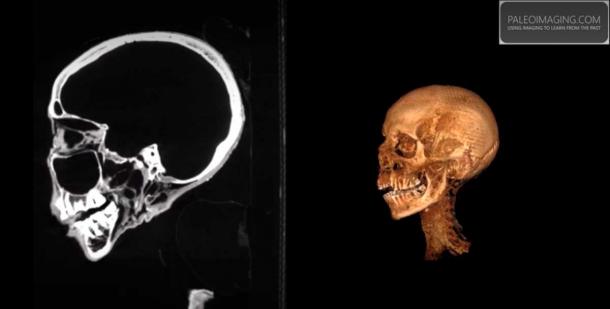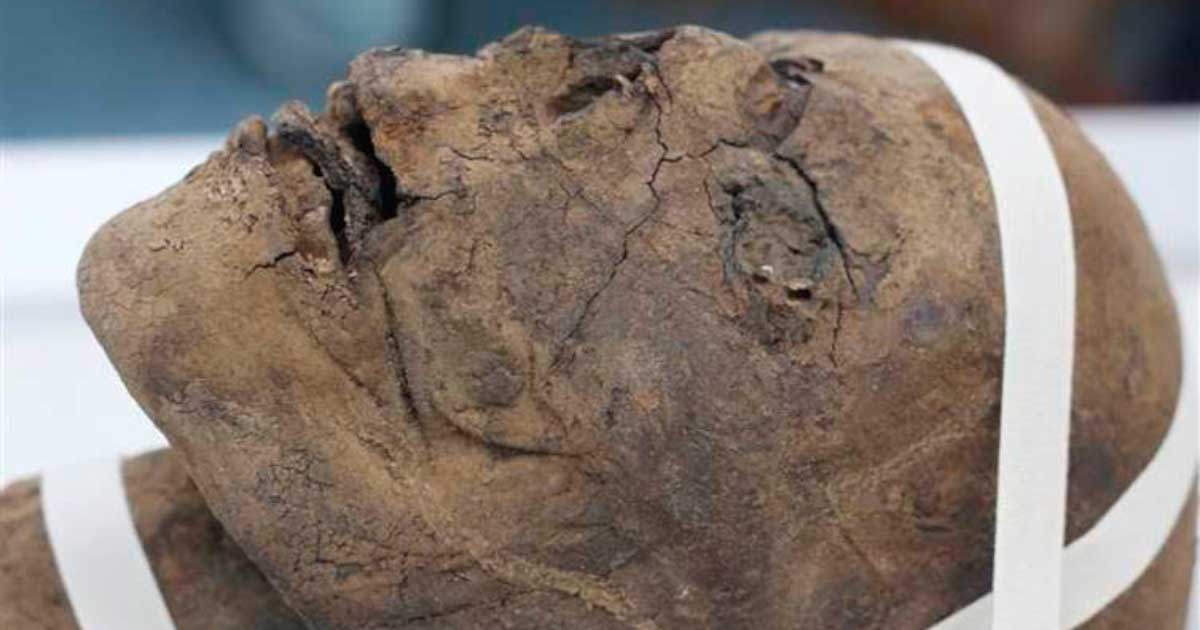Egyptian Mummy’s Head Discovered In English Attic Scanned
Archaeologists and hospital staff in England have been working together. They’ve CT scanned an ancient Egyptian mummy’s head that was discovered in an English attic.
In the 1820s a 2,700-year-old Egyptian mummy was shipped as a souvenir to someone in Ramsgate, a seaside town in the district of Thanet in East Kent, England. Following the death of the homeowner, his brother donated the head in its glass display case to the Canterbury Museums and Galleries collection, reports Kent Online.
Charting Ancient Corpses
Craig Bowen is galleries collections and learning manager at the Canterbury Museum. He told press that the mummy’s head was “found by a man who inherited it from his brother, who got it from a 'Dr Coates' sometime in the early/mid twentieth century.”
The 2020 X-rays taken at Canterbury Christ Church University determined the mummy was an adult female. But now, a detailed CT scan has revealed a volume of new data about the individual before she died. CT scans, or ‘computerized tomography’, involves taking a series of X-ray images taken from different angles around a body. A supercomputer then marries the cross-sectional images (slices) together producing a hi-resolution map of the scanned body.
- Mummy Brown – 16th Century Paint Made from Ground Up Mummies
- Fetus Found Mummified Inside the Womb of a 2,000-Year-Old Egyptian Mummy

Left to right - Dana Goodburn-Brown (archaeological conservator), Tristan Barnden (Lead radiographer, Nuclear Medicine, Maidstone and Tunbridge Wells NHS Trust), and James Elliott (Canterbury Christ Church University). Centre - The mummy head, looking from underneath the chin. (James Elliott / Paleoimaging)
Brainless In The Afterlife
The new CT scans were undertaken by James Elliott, a lecturer in diagnostic radiography at Canterbury Christ Church University and senior radiographer at Maidstone and Tunbridge Wells NHS Trust. Elliott says in a report on his website, Paleoimaging.com that the new scans provide “a huge amount of information, everything from dental status, pathologies, method of preservation as well as helping our estimations of age and sex.”

Screenshot from CT reconstruction produced by Paleo Imaging using RadiANT DICOM viewer, revealed the brain has been removed as is usual with Egyptian mummies. (Paleoimaging.com)
The scans revealed the woman’s brain had been removed. This means she had visited a Per-Nefer, or 'house of beauty' after death. This was where the first part of purification and mummification procedures and rites occurred. Traditionally, embalmers used hammers and chisels to access the brain through the nasal bone, through which they inserted an iron hook and slowly pulled out the brain matter. The remains were scooped out by spoon and the cranial cavity was washed with water.
Craig Bowen said it was ironic that ancient Egyptians believed that a person’s mind “was held in their heart and had little regard for the brain”. He also added that CT scans are showing “great variability” in how brains were removed.
Details of the Ancient Egyptian Revealed By Mummy Head Scan
The CT scans revealed that the woman’s tongue was very well preserved, and that her teeth were well worn. The former stands testimony to the well-developed methodology of the ancient preservers while the latter indicates the woman had a life-long diet of coarse foods. According to a report in Kent Online “a tubing of unknown material” was found trapped within the mummy’s left nostril. And the same material was identified in the spinal canal. The origins and composition of these blockages are currently unknown, and they might be modern, perhaps Victorian.
Craig Bowen says this project is part of a larger aim to preserve the head and allow it to be displayed in conservation grade packaging for public viewing. The team plans on using their newly acquired CT scanning data to create a three-dimensional replica of the woman’s head. Furthermore, they will also attempt to reconstruct the woman's face in 3D “without exposing the actual artifact,” said Bowen.
Top image: Egyptian mummy head found in an attic in Ramsgate, England. Source: James Elliott / Paleoimaging
By Ashley Cowie



















